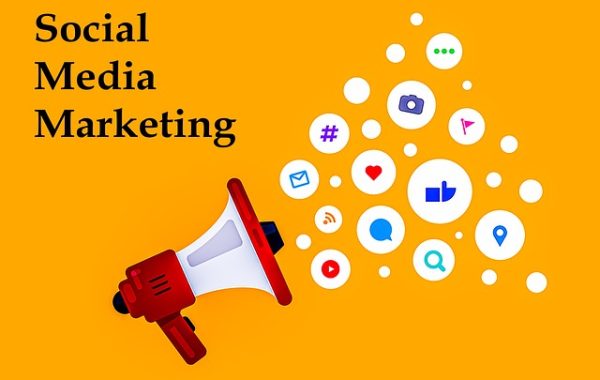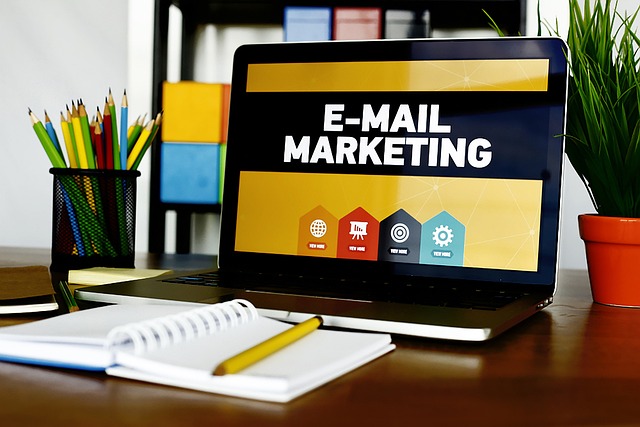Our Services
Welcome to GoGrowDigitally
At GoGrowDigitally, we are passionate about helping businesses thrive in the digital age. In today’s fast-paced world, having a strong online presence is essential for success. That’s where we come in. We’re your trusted partner for all things digital marketing, offering a wide range of services to help your business grow and succeed.

Search Engine Optimization (SEO)
Importance of SEO:
The significance of SEO cannot be overstated in today’s digital age. It plays a pivotal role in driving organic traffic, enhancing brand awareness, and boosting online credibility. Here are some key reasons why SEO is crucial:
Increased Visibility and Traffic: A majority of online experiences begin with a search engine. Implementing effective SEO techniques helps your website appear higher in search engine results pages (SERPs), leading to increased visibility and attracting more organic traffic.
Credibility and Trust: Users often associate higher search engine rankings with credibility and trustworthiness. Being prominently displayed in search results conveys that your website is relevant and authoritative within its industry.
Cost-Effectiveness: While paid advertising can provide quick results, it can be expensive over time. SEO, on the other hand, offers a cost-effective way to attract long-term organic traffic without incurring ongoing advertising costs.
User Experience: SEO involves optimizing various aspects of a website, including site speed, mobile-friendliness, and user-friendly navigation. These improvements not only please search engines but also enhance the overall user experience.
Targeted Traffic: SEO allows you to target specific keywords and phrases relevant to your business. This ensures that you’re attracting users actively seeking the products or services you offer, resulting in higher conversion rates.
Key Features of SEO:
SEO encompasses a range of techniques and strategies, each contributing to its effectiveness. Some key features of SEO include:
Keyword Research: Identifying and targeting relevant keywords that users are searching for is the foundation of SEO. Thorough keyword research helps you understand your audience’s intent and tailor your content accordingly.
On-Page Optimization: This involves optimizing individual web pages for specific keywords by incorporating them into titles, headings, meta descriptions, and content. On-page optimization also includes optimizing images, URLs, and internal links.
Content Creation: High-quality, relevant, and engaging content is at the heart of SEO. Creating informative articles, blog posts, videos, and other content not only attracts users but also establishes your authority in your niche.
Link Building: Acquiring high-quality, authoritative backlinks from other websites is crucial for SEO. Search engines view these links as “votes of confidence,” indicating that your content is valuable and worth recommending.
Technical SEO: This involves optimizing the technical aspects of your website, such as site speed, mobile responsiveness, URL structure, and sitemap. A technically sound website enhances user experience and search engine crawling.
User Experience (UX): Search engines consider user experience when ranking websites. A well-designed and easy-to-navigate website with clear calls to action contributes to higher user engagement and improved SEO performance.
Local SEO: For businesses with physical locations, local SEO is vital. It involves optimizing your website for local searches and ensuring accurate business information on online directories and maps.
Analytics and Monitoring: Regularly analyzing and monitoring your website’s performance through tools like Google Analytics helps you track progress, identify areas for improvement, and adjust your SEO strategy accordingly.
Conclusion:
In the competitive online landscape, SEO emerges as a fundamental strategy for enhancing a website’s visibility, attracting targeted traffic, and building brand credibility. Its multifaceted approach, which includes keyword research, content creation, technical optimization, and user experience enhancement, contributes to its significance. As search engines continue to evolve and user behavior changes, staying updated with the latest SEO trends and best practices is essential to maintaining a strong online presence and reaping the benefits of increased organic traffic and business success.

Social Media Marketing (SMM)
Understanding Social Media Marketing:
Social media marketing involves utilizing various social media platforms to create, curate, and share content with the aim of reaching and engaging a specific audience. It’s a dynamic and versatile strategy that allows businesses to establish a brand presence, connect with their audience, drive traffic, and ultimately, convert followers into customers.
Key Benefits of Social Media Marketing for Your Service Page:
Enhanced Visibility and Reach: Social media platforms have billions of active users, providing an immense opportunity to increase the visibility of your service page. By sharing compelling content and engaging with your audience, you can expand your reach far beyond traditional marketing methods.
Targeted Audience Engagement: Social media allows you to define and target your ideal audience based on demographics, interests, behaviors, and more. This precision targeting ensures that your content reaches those who are most likely to be interested in your services.
Brand Building and Awareness: Establishing a consistent and authentic brand presence on social media helps create brand recognition and awareness. Regular interactions with your audience build trust and loyalty, leading to increased credibility and a positive brand image.
Content Showcase: Social media provides a platform to showcase your services through various content formats such as images, videos, infographics, and articles. This allows you to effectively communicate the value and benefits of your offerings.
Customer Interaction and Feedback: Social media offers a direct line of communication between your business and your customers. You can respond to inquiries, address concerns, and gather feedback in real-time, fostering a sense of community and customer satisfaction.
Effective Strategies for Social Media Marketing:
Platform Selection: Choose the social media platforms that align with your target audience and service type. For visual services, platforms like Instagram and Pinterest might be ideal, while professional services can thrive on LinkedIn.
Content Strategy: Create a content calendar outlining the types of content you’ll share, including promotional posts, educational content, customer testimonials, behind-the-scenes glimpses, and more. Diversify your content to keep your audience engaged and interested.
Engagement and Interaction: Regularly interact with your audience by responding to comments, messages, and mentions. Engage in conversations, ask questions, and encourage user-generated content to foster a sense of community.
Visual Appeal: Visual content is highly shareable and attention-grabbing. Use high-quality images and videos to showcase your services, and consider incorporating storytelling elements to make your content more relatable.
Hashtags and Keywords: Utilize relevant hashtags and keywords in your posts to increase discoverability. Research popular industry-related hashtags to reach a broader audience.
Paid Advertising: Consider investing in paid social media advertising to further amplify your reach and target specific demographics. Platforms like Facebook and Instagram offer robust ad targeting options.
Analytics and Optimization: Regularly monitor your social media analytics to gauge the effectiveness of your efforts. Adjust your strategy based on insights, focusing on what’s working and refining areas that need improvement.
Conclusion:
Social media marketing has revolutionized the way businesses promote their services, offering a direct and engaging channel to connect with potential customers. By leveraging the power of social media platforms, you can enhance the visibility of your service page, build brand awareness, engage your target audience, and ultimately drive conversions. Implementing a thoughtful and strategic social media marketing approach can open doors to new opportunities and elevate your service page to new heights in the digital realm.

Understanding Social Media Marketing:
Social media marketing involves utilizing various social media platforms to create, curate, and share content with the aim of reaching and engaging a specific audience. It’s a dynamic and versatile strategy that allows businesses to establish a brand presence, connect with their audience, drive traffic, and ultimately, convert followers into customers.
Key Benefits of Social Media Marketing for Your Service Page:
Enhanced Visibility and Reach: Social media platforms have billions of active users, providing an immense opportunity to increase the visibility of your service page. By sharing compelling content and engaging with your audience, you can expand your reach far beyond traditional marketing methods.
Targeted Audience Engagement: Social media allows you to define and target your ideal audience based on demographics, interests, behaviors, and more. This precision targeting ensures that your content reaches those who are most likely to be interested in your services.
Brand Building and Awareness: Establishing a consistent and authentic brand presence on social media helps create brand recognition and awareness. Regular interactions with your audience build trust and loyalty, leading to increased credibility and a positive brand image.
Content Showcase: Social media provides a platform to showcase your services through various content formats such as images, videos, infographics, and articles. This allows you to effectively communicate the value and benefits of your offerings.
Customer Interaction and Feedback: Social media offers a direct line of communication between your business and your customers. You can respond to inquiries, address concerns, and gather feedback in real-time, fostering a sense of community and customer satisfaction.
Effective Strategies for Social Media Marketing:
Platform Selection: Choose the social media platforms that align with your target audience and service type. For visual services, platforms like Instagram and Pinterest might be ideal, while professional services can thrive on LinkedIn.
Content Strategy: Create a content calendar outlining the types of content you’ll share, including promotional posts, educational content, customer testimonials, behind-the-scenes glimpses, and more. Diversify your content to keep your audience engaged and interested.
Engagement and Interaction: Regularly interact with your audience by responding to comments, messages, and mentions. Engage in conversations, ask questions, and encourage user-generated content to foster a sense of community.
Visual Appeal: Visual content is highly shareable and attention-grabbing. Use high-quality images and videos to showcase your services, and consider incorporating storytelling elements to make your content more relatable.
Hashtags and Keywords: Utilize relevant hashtags and keywords in your posts to increase discoverability. Research popular industry-related hashtags to reach a broader audience.
Paid Advertising: Consider investing in paid social media advertising to further amplify your reach and target specific demographics. Platforms like Facebook and Instagram offer robust ad targeting options.
Analytics and Optimization: Regularly monitor your social media analytics to gauge the effectiveness of your efforts. Adjust your strategy based on insights, focusing on what’s working and refining areas that need improvement.
Conclusion:
Social media marketing has revolutionized the way businesses promote their services, offering a direct and engaging channel to connect with potential customers. By leveraging the power of social media platforms, you can enhance the visibility of your service page, build brand awareness, engage your target audience, and ultimately drive conversions. Implementing a thoughtful and strategic social media marketing approach can open doors to new opportunities and elevate your service page to new heights in the digital realm.

Pay Per Click (PPC)
Understanding Pay-Per-Click Advertising:
PPC advertising is a digital marketing model in which advertisers pay a fee each time their ad is clicked. These ads are typically displayed on search engines, social media platforms, and other relevant websites. One of the most popular platforms for PPC advertising is Google Ads, where ads appear at the top of search engine results pages (SERPs) when users search for specific keywords related to your services.
Key Benefits of PPC Advertising for Your Service Page:
Immediate Visibility: Unlike organic search engine optimization (SEO), which takes time to yield results, PPC advertising offers immediate visibility. Once your campaign is set up, your ads can appear at the top of search results, ensuring that your service page gets instant exposure.
Targeted Audience Reach: PPC advertising allows you to target specific demographics, locations, interests, and even devices. This precision targeting ensures that your ads reach the most relevant audience, increasing the likelihood of conversions.
Cost Control: With PPC, you have control over your budget. You can set daily or monthly spending limits, ensuring that you only spend what you’re comfortable with. Additionally, you only pay when someone clicks on your ad, making it a cost-effective option.
Measurable Results: PPC advertising provides detailed analytics and reporting, allowing you to track key metrics such as clicks, impressions, click-through rates (CTR), and conversions. This data enables you to measure the effectiveness of your campaigns and make data-driven optimizations.
Flexibility and Customization: PPC campaigns can be customized to align with your goals. Whether you want to drive traffic, increase conversions, or promote a specific offer, you can tailor your ad copy and targeting accordingly.
Effective Strategies for PPC Advertising:
Keyword Research: Conduct thorough keyword research to identify relevant and high-converting keywords related to your services. Use tools like Google Keyword Planner to discover keywords with a balance of search volume and competition.
Compelling Ad Copy: Craft attention-grabbing and persuasive ad copy that highlights the unique benefits of your services. Use a clear call to action (CTA) to encourage users to take the desired action, such as clicking through to your service page.
Landing Page Optimization: Ensure that the landing page users are directed to is optimized for conversions. The landing page should be relevant to the ad, provide valuable information, and have a clear CTA.
Ad Extensions: Take advantage of ad extensions to provide additional information to users, such as location, phone number, site links, and more. Ad extensions enhance the visibility of your ads and provide users with more reasons to click.
A/B Testing: Continuously test different ad variations to identify what resonates best with your audience. Test elements like headlines, ad copy, CTAs, and even landing page layouts to optimize your campaigns.
Remarketing: Implement remarketing campaigns to target users who have previously visited your service page. Remarketing ads can remind them of your services and encourage them to revisit your page and convert.
Monitoring and Optimization: Regularly monitor your campaigns’ performance and make data-driven adjustments. Pause underperforming ads, reallocate budgets to successful campaigns, and refine your targeting based on insights.
Conclusion:
PPC advertising presents a dynamic and results-oriented approach to promoting your service page. By strategically leveraging PPC platforms, you can ensure your service offerings are prominently displayed to a targeted audience, drive traffic, and generate valuable conversions. The ability to control budgets, measure results, and customize campaigns makes PPC an essential tool in your digital marketing arsenal. As you delve into the world of PPC advertising, remember that continuous optimization, creative testing, and a focus on delivering value to your audience are key to unlocking its full potential for your service page’s success.

Online Media Buying (OMB)
What is Online Media Buying?
Online media buying refers to the process of purchasing digital advertising space on various online platforms to display your ads to a specific target audience. It involves selecting the right channels, placements, and formats to deliver your message to potential customers in a targeted and efficient manner.
Key Benefits of Online Media Buying for Your Service Page:
Precise Targeting: Online media buying allows you to target your ads based on factors such as demographics, interests, location, and online behavior. This precision targeting ensures that your ads are seen by individuals who are most likely to be interested in your services.
Increased Visibility: By strategically placing your ads on popular websites, social media platforms, and other online spaces, you can significantly increase your service page’s visibility and reach a wider audience.
Brand Awareness: Online media buying enables you to showcase your brand to a larger audience, contributing to increased brand awareness and recognition among potential customers.
Measurable Results: Digital advertising provides detailed analytics that allow you to track key performance metrics, such as impressions, clicks, conversions, and return on investment (ROI). This data-driven approach helps you assess the effectiveness of your campaigns.
Effective Strategies for Online Media Buying:
Define Your Goals: Clearly outline your objectives for online media buying. Whether you aim to increase website traffic, generate leads, or boost sales, defining your goals will guide your strategy.
Know Your Audience: Understand your target audience’s demographics, interests, and online behavior. This knowledge helps you tailor your ads and select the most appropriate platforms.
Choose the Right Platforms: Research and identify the online platforms where your target audience spends their time. This could include social media platforms, websites, blogs, and industry-specific forums.
Select Ad Formats: Choose ad formats that resonate with your target audience. Options include display ads, video ads, native ads, and more. The format should align with your message and platform.
Set a Budget: Determine your budget for online media buying. Consider factors such as ad costs, frequency, and duration. A well-defined budget ensures that you stay on track and allocate resources effectively.
Monitor and Optimize: Continuously monitor the performance of your ads. Use analytics to track metrics, identify trends, and make data-driven optimizations to improve your campaign’s effectiveness.
A/B Testing: Test different ad variations to identify which elements resonate best with your audience. Experiment with different headlines, visuals, calls to action, and landing pages to optimize your campaigns.
Landing Page Optimization: Ensure that the landing page users are directed to is optimized for conversions. The landing page should be relevant, user-friendly, and aligned with the ad’s message.
Conclusion:
Online media buying offers a strategic and data-driven approach to promoting your service page and connecting with potential customers. By strategically selecting platforms, targeting your audience, and crafting compelling ad campaigns, you can enhance your online visibility, drive traffic, and ultimately boost conversions. The key lies in understanding your audience, setting clear goals, and continually optimizing your campaigns based on performance data. Through a well-executed online media buying strategy, you can leverage the power of digital advertising to unlock new opportunities and drive the success of your service page in the competitive digital landscape.

Email marketing
Understanding Email Marketing:
Email marketing involves sending targeted emails to a list of subscribers with the goal of building relationships, promoting products or services, and driving desired actions. It’s a direct and intimate communication channel that allows you to connect with your audience on a one-on-one basis.
Key Benefits of Email Marketing for Your Service Page:
Personalized Communication: Email marketing enables you to tailor your messages based on subscriber preferences, behaviors, and demographics. Personalization creates a sense of relevance and encourages higher engagement.
Lead Nurturing: Through a series of well-crafted emails, you can nurture leads at various stages of the customer journey. This helps move potential customers closer to making a purchase or requesting your services.
Conversion Boost: Email campaigns can include compelling calls to action (CTAs) that drive recipients to take specific actions, such as visiting your service page, signing up for a webinar, or requesting a consultation.
Brand Awareness: Consistent and well-branded email communications reinforce your brand identity and keep your services top of mind for your subscribers.
Cost-Effective: Email marketing is one of the most cost-effective digital marketing strategies. With a small investment, you can reach a large audience and achieve a significant return on investment (ROI).
Effective Strategies for Email Marketing:
Build a Quality Subscriber List: Focus on growing a quality subscriber list composed of individuals who have expressed genuine interest in your services. Use opt-in forms on your website, social media, and other touchpoints to collect email addresses.
Segmentation: Divide your subscriber list into segments based on demographics, interests, buying behavior, and other relevant factors. Segmenting allows you to send targeted and relevant content to specific groups.
Engaging Content: Craft valuable and engaging content for your email campaigns. This can include informative articles, how-to guides, case studies, success stories, and exclusive offers.
Compelling Subject Lines: Your subject line is the first thing recipients see. Craft compelling and relevant subject lines that entice subscribers to open your emails.
Mobile Optimization: Given the prevalence of mobile devices, ensure that your email templates are mobile-responsive. Emails should look and function seamlessly on various screen sizes.
Clear Call to Action (CTA): Each email should have a clear and compelling CTA that guides recipients to take a specific action, such as visiting your service page, filling out a form, or making a purchase.
Automation: Implement email automation workflows to deliver targeted content based on subscriber actions. For example, you can send a series of nurturing emails to new subscribers or follow up with abandoned cart reminders.
Testing and Optimization: Regularly test different elements of your emails, such as subject lines, content, and CTAs. Analyze metrics like open rates, click-through rates, and conversion rates to optimize your campaigns.
Conclusion:
Email marketing offers a personalized and direct way to engage with your audience and promote your services. By delivering relevant content, nurturing leads, and fostering brand loyalty, email campaigns can drive conversions and contribute to the success of your service page. The key lies in building a quality subscriber list, crafting engaging content, and leveraging segmentation and automation to deliver the right message to the right people at the right time. Through a strategic and customer-centric approach to email marketing, you can enhance your service page’s visibility, attract potential customers, and cultivate lasting relationships in the ever-evolving digital landscape.

Web Development
The Role of Web Development:
Web development involves the creation, enhancement, and maintenance of websites. It encompasses a range of activities, including front-end development (user interface design), back-end development (server-side programming), database management, and overall website functionality. A well-executed web development strategy ensures that your service page is not only visually appealing but also performs optimally across various devices and browsers.
Key Elements of Web Development for Your Service Page:
Responsive Design: With the increasing use of mobile devices, having a responsive design is paramount. Your service page should adapt seamlessly to different screen sizes, ensuring a consistent and user-friendly experience for visitors on smartphones, tablets, and desktops.
User-Centric Navigation: Intuitive navigation is essential for guiding users through your service offerings. A well-organized menu, clear categories, and easy-to-find information contribute to a positive user experience and encourage exploration of your services.
Page Speed Optimization: Slow-loading pages can lead to user frustration and high bounce rates. Web development includes optimizing images, minimizing code, and leveraging caching techniques to ensure your service page loads quickly and efficiently.
Compelling Visuals: Visually appealing elements, such as high-quality images, graphics, and videos, enhance user engagement and help convey the value of your services. Attention to visual design ensures a professional and inviting appearance.
Content Management System (CMS): Implementing a user-friendly CMS, such as WordPress, Joomla, or Drupal, empowers you to update and manage your service page’s content without extensive technical knowledge. A robust CMS streamlines content updates and additions.
Forms and Contact Information: If your service page includes contact forms or inquiry forms, ensure they are user-friendly and functional. Users should be able to easily reach out and inquire about your services, fostering potential leads.
Security Measures: Implementing security protocols, such as SSL certificates and secure payment gateways, is crucial for safeguarding user data and building trust. A secure website is essential for both user confidence and search engine ranking.
Search Engine Optimization (SEO): While web development focuses on the technical aspects, integrating SEO best practices ensures that your service page is search engine-friendly. Proper use of meta tags, headers, and keyword optimization contributes to better search engine visibility.
Integration of Analytics: Incorporate analytics tools, such as Google Analytics, to track user behavior, monitor traffic, and gain insights into how visitors interact with your service page. This data informs future improvements and optimizations.
Testing and Quality Assurance: Thoroughly test your service page across different devices and browsers to identify and rectify any issues. Quality assurance ensures a consistent experience for all users.
Collaboration with Web Developers:
Collaborating with skilled web developers is crucial to bringing your service page vision to life. They possess the technical expertise to implement your design, ensure functionality, and optimize performance. When working with web developers:
- Clearly communicate your objectives, design preferences, and desired features.
- Provide comprehensive documentation outlining the scope of the project.
- Seek regular updates and collaborate throughout the development process.
- Test the developed site thoroughly before launch to ensure all elements work seamlessly.
Conclusion:
Web development is the backbone of a successful service page, combining technical prowess with creative design to create an engaging and functional online presence. A well-executed web development strategy ensures that your service offerings are effectively communicated, user-friendly, and accessible across various devices. By prioritizing responsive design, user-centric navigation, and optimizing performance, you can create a service page that not only captures the attention of your target audience but also converts visitors into satisfied customers.

Web Design
The Significance of Web Design:
Web design is the art and science of creating a website’s visual layout, user interface, and overall aesthetics. It involves combining creative elements with technical expertise to deliver an engaging and seamless user experience. Effective web design not only captivates visitors but also guides them through your services, encouraging exploration and interaction.
Essential Elements of Web Design for Your Service Page:
Clear and Intuitive Navigation: A well-structured navigation menu is essential for guiding users through your service offerings. Ensure that your navigation is user-friendly, intuitive, and easily accessible across devices.
Visual Hierarchy: Establish a clear visual hierarchy that highlights the most important elements of your service page. Use font size, color, and spacing to draw attention to key information, such as service descriptions and calls to action.
Compelling Visuals: Incorporate high-quality images, graphics, and videos that showcase your services and resonate with your target audience. Visual content should be relevant, engaging, and aligned with your brand identity.
Consistent Branding: Maintain a consistent visual identity throughout your service page, including the use of your logo, color palette, typography, and other branding elements. Consistency fosters brand recognition and trust.
Responsive Design: With the increasing use of mobile devices, responsive design is crucial. Ensure that your service page looks and functions seamlessly on smartphones, tablets, and desktops, offering a consistent experience across all screen sizes.
Whitespace and Readability: Effective use of whitespace (empty space) enhances readability and reduces visual clutter. Break up content with ample whitespace to make your service descriptions, headings, and other text elements easier to read.
Call to Action (CTA): Strategically place compelling CTAs throughout your service page to guide users towards desired actions, such as requesting more information, signing up, or making a purchase.
User-Friendly Forms: If your service page includes contact forms or inquiry forms, design them to be user-friendly and straightforward. Minimize the number of required fields and provide clear instructions.
Typography: Choose fonts that are easy to read and align with your brand’s tone and personality. Consistency in font styles and sizes enhances readability and maintains a professional look.
Page Speed Optimization: Optimize images, minimize code, and leverage caching techniques to ensure your service page loads quickly. Slow-loading pages can lead to user frustration and higher bounce rates.
Engaging with Web Designers:
Collaborating with skilled web designers is essential to transform your vision into a visually appealing and functional service page. To effectively work with web designers:
- Clearly communicate your brand identity, target audience, and service offerings.
- Share design preferences, color schemes, and any existing branding materials.
- Provide examples of websites or designs you admire for inspiration.
- Seek feedback and be open to their creative suggestions.
Conclusion:
Web design is the bridge that connects your service offerings with your target audience in the digital landscape. By focusing on clear navigation, engaging visuals, and user-centric design, you can create a service page that effectively communicates your services, engages visitors, and encourages conversions. A well-designed service page not only captures attention but also fosters a positive perception of your brand and services. Through collaboration with talented web designers and a thoughtful approach to design principles, you can create a captivating and impactful service page that sets the stage for your online success.

Content Marketing
Understanding Content Marketing:
Content marketing goes beyond traditional advertising by delivering value to your audience through informative, entertaining, or educational content. It aims to establish a relationship with your audience based on trust and credibility, ultimately driving them to take action, such as making a purchase or requesting your services.
Key Benefits of Content Marketing for Your Service Page:
Brand Authority: Creating high-quality and relevant content establishes you as an authority in your industry. By sharing insights, tips, and valuable information, you position yourself as a trusted source for potential customers seeking your services.
Engagement and Interaction: Engaging content, such as blog posts, videos, and infographics, encourages audience interaction and sharing. This interaction fosters a sense of community and encourages users to spend more time on your service page.
Search Engine Visibility: Content that is optimized for search engines increases your service page’s visibility in search engine results. Quality content attracts organic traffic and improves your search engine rankings.
Lead Generation: Informative content can attract potential customers who are actively seeking information about the services you offer. By capturing their interest through your content, you can convert them into leads.
Audience Building: Consistent content creation helps you build a loyal and engaged audience. Regular updates keep your audience coming back for more and encourage them to subscribe or follow your service page.
Effective Strategies for Content Marketing:
Know Your Audience: Understand your target audience’s needs, preferences, and pain points. Tailor your content to address their specific challenges and provide valuable solutions.
Content Variety: Diversify your content formats to cater to different preferences. Consider creating blog posts, videos, infographics, case studies, podcasts, and more.
Keyword Research: Identify relevant keywords related to your services and integrate them naturally into your content. This enhances your content’s search engine visibility and helps you reach the right audience.
Consistent Publishing: Develop a content calendar and stick to a consistent publishing schedule. Regular updates keep your audience engaged and demonstrate your commitment to providing valuable information.
Storytelling: Incorporate storytelling elements into your content to make it relatable and memorable. Sharing anecdotes, experiences, and success stories can resonate with your audience and create a stronger emotional connection.
Promotion and Distribution: Share your content across various channels, including social media platforms, email newsletters, and relevant online communities. Effective distribution maximizes your content’s reach.
Guest Posting and Partnerships: Collaborate with industry influencers or other businesses for guest posting opportunities. This expands your reach and exposes your content to new audiences.
Data-Driven Optimization: Monitor the performance of your content using analytics tools. Track metrics such as engagement, traffic, and conversion rates to identify what content resonates the most with your audience.
Conclusion:
Content marketing is a strategic approach that empowers you to showcase your expertise, engage your audience, and drive conversions for your service page. By creating valuable and relevant content that addresses your audience’s needs, you can establish yourself as a trusted authority and connect with potential customers on a deeper level. Consistent and strategic content marketing efforts can amplify your online presence, attract organic traffic, and contribute to the growth of your service page. Through a combination of thoughtful content creation, effective distribution, and data-driven optimization, you can harness the power of content marketing to unlock success for your service page in the competitive digital landscape.

